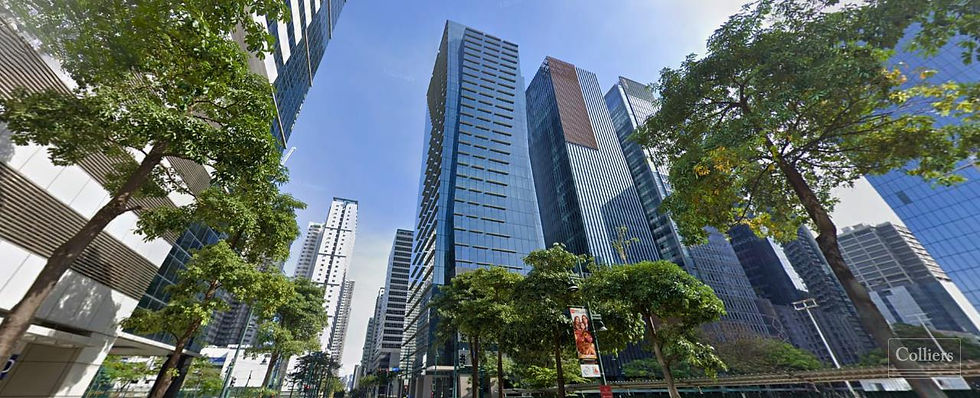What's Happening in the Manila Rental Market in 2025?
- bedandgoinc
- 7月22日
- 読了時間: 3分
Date: July 22,2025
5 Key Factors Driving Manila Real Estate Strategy This Year
The Manila rental market in 2025 is navigating a season of rebalancing. With the economy recovering, policy rates stabilizing, and property developers adapting to post-pandemic demand shifts, both renters and investors are finding new opportunities—and facing new risks. As of Q3 2025, the market remains dynamic but requires sharper strategy, clearer insight, and better timing.

Here are the five biggest factors shaping the Manila real estate and rental outlook in 2025:
1. Vacancy Rates Remain High—but the Tides Are Shifting
Mid-2025 reports from Colliers and Leechiu show Manila's residential vacancy rates hovering between 16.5% to 17.8%, particularly in high-rise condominiums in Makati, Ortigas, and parts of BGC. This is still high by historical standards, though marginally lower than early 2024.
However, tenant activity has picked up in Q2 and Q3, thanks to the return of foreign professionals, OFWs investing in rental properties, and renewed interest in co-living and short-term leasing.
Insight: Landlords are now offering more flexible lease terms and lower deposits to combat the oversupply. This is a tenant-friendly market—but for investors, it’s also an ideal time to acquire undervalued units with long-term rental potential.
2. Interest Rates Stabilized: Time to Buy or Wait?
The Bangko Sentral ng Pilipinas (BSP) has kept the benchmark rate steady at 6.5% since late 2023, with no rate cuts announced as of July 2025. While this continues to deter some buyers due to high financing costs, it has pushed more demand into the rental segment—especially among younger professionals and start-up workers.
Strategy Tip: Investors with cash on hand can capitalize on lower unit prices and rising rental demand. Those financing with loans may want to wait for a rate drop, but signs point to a possible cut in late 2025 if inflation remains tame.

3. Urban Migration and Infrastructure Are Fueling New Hotspots
Metro Manila continues to attract jobseekers and students from nearby provinces, with public infrastructure projects—like MRT-7, Metro Manila Subway, and BGC-Ortigas Link—starting to impact rental demand patterns.
Areas like Quezon City, Mandaluyong, and Pasay are seeing increased interest from tenants due to their improved connectivity and more affordable price points compared to core CBDs like Makati.
Where to Watch: Eastwood City, Bay Area, Vertis North, and Araneta City are among the emerging zones with strong rental potential in H2 2025.
4. Logistics Growth Is Influencing Residential Demand in Fringe Areas
The logistics and warehousing boom has continued into 2025, with rental growth in industrial properties hitting over 30% year-on-year in places like Cavite, Laguna, and Bulacan. As large firms expand warehouse operations, they’re bringing in workers who need affordable, nearby housing.
Effect on Housing: Developers and landlords in fringe areas are now pivoting to offer mid-range housing options tailored to logistics employees and their families, creating residential demand in traditionally commercial corridors.

5. Manila vs. the Region: Still Competitive, but With Caveats
Compared to other ASEAN cities like Jakarta, Bangkok, and Ho Chi Minh, Manila remains competitively priced for both rentals and acquisitions. Investors can still find units with gross rental yields of 6% to 7% in Makati, Taguig, and Bay Area.
However, concerns persist: bureaucratic hurdles, slow transfer processes, and unclear foreign ownership rules still dampen foreign enthusiasm. The government's recent efforts to digitize land titling and streamline transfer tax filings are promising—but full implementation is still in progress.
Regional View: Manila is still a top pick for yield-focused investors, but reforms must accelerate to keep pace with more investor-friendly regional neighbors.
Conclusion: 2025 Is a Year of Opportunity for the Informed and Strategic
As of mid-2025, the Manila rental market reflects a delicate balance: oversupply in some pockets, surging tenant demand in others. Infrastructure projects, steady population growth, and economic recovery are giving new life to previously overlooked districts, while policy decisions like BSP's rate stance are influencing leasing behavior.
Key takeaways for 2025:
For renters: Now is an ideal time to negotiate better rates and flexible lease terms.
For investors: Focus on transit-oriented properties, suburban growth zones, and units below market value with strong rental potential.
For developers: Consider adjusting project strategies to cater to co-living models, mid-market renters, and suburban logistics-linked demand.
The remainder of 2025 offers strong upside potential—but only for those who pay close attention to trends, timing, and tenant behavior. The Manila rental market is no longer just about location—it's about insight, strategy, and speed.
Source:









コメント